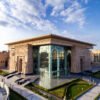If you’re asking, “Is it safe to travel to Egypt right now?” you’re not alone. Egypt’s timeless allure—pyramids, ancient…
Deep beneath the Mediterranean Sea, you’ll find one of Egypt’s most intriguing mysteries: the ancient city of Thonis-Heracleion.…





